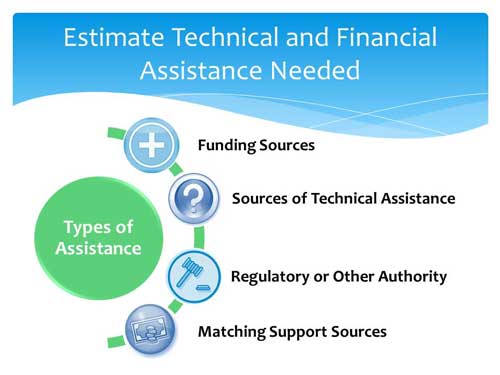Step 4: Design Implementation Program and Assemble the Watershed Plan (cont.)
Identify Technical and Financial Assistance Needed
A critical factor in turning your watershed plan into action is the ability to fund implementation. Funding might be needed for multiple activities such as management practice installation, I/E activities, monitoring, and administrative support. In addition, you should document what types of technical assistance are needed to implement the plan and what resources or authorities will be relied on for implementation, in terms of both initial adoption and long-term operation and maintenance (O&M). For example, if you have identified adoption of local ordinances as a management tool to meet your water quality goals, you should involve the local authorities that are responsible for developing these ordinances. The estimate of financial and technical assistance (which satisfies element d of the section 319 guidelines) should take into account the following:
- Administration and management services, including salaries, regulatory fees, and supplies, as well as in-kind services efforts, such as the work of volunteers and the donation of facility use.
- I/E efforts.
- The installation, operation, and maintenance of management measures.
- Monitoring, data analysis, and data management activities.
For more information on locating resources, leveraging funds and estimated estimating costs, see chapter 12 of the Handbook for Developing Watershed Plans to Restore and Protect Our Waters. For a complete list of federal funding opportunities, see the Catalog of Federal Domestic Assistance. This website provides access to a database of all federal programs available. Also visit the Catalog of Federal Funding Sources for Watershed Protection to help match your watershed project needs with funding sources and EPA’s Sustainable Funding website.
![[logo] US EPA](https://www.epa.gov/epafiles/images/logo_epaseal.gif)






